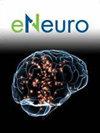Astrocytes in the External Globus Pallidus Selectively Represent Routine Formation During Repeated Reward-Seeking in Mice.
IF 2.7
3区 医学
Q3 NEUROSCIENCES
引用次数: 0
Abstract
The external globus pallidus (GPe) is a central part of the basal ganglia indirect pathway implicated in movement and decision-making. As a hub connecting the dorsal striatum and subthalamic nucleus (STN), the GPe guides repetitive and routine behaviors. However, it remains unknown how diverse GPe cells engage in routine formation while learning action sequences in repetitive reward-seeking conditioning. Here, in male mice, we investigated the Ca2+ dynamics of two GPe cell types, astrocytes and parvalbumin-expressing neurons, during routine formation. Our findings show that the dynamics of GPe astrocytes may be involved in action sequence refinement, a characteristic potentially contributing to more efficient reward-seeking behavior.
求助全文
约1分钟内获得全文
求助全文
来源期刊

eNeuro
Neuroscience-General Neuroscience
CiteScore
5.00
自引率
2.90%
发文量
486
审稿时长
16 weeks
期刊介绍:
An open-access journal from the Society for Neuroscience, eNeuro publishes high-quality, broad-based, peer-reviewed research focused solely on the field of neuroscience. eNeuro embodies an emerging scientific vision that offers a new experience for authors and readers, all in support of the Society’s mission to advance understanding of the brain and nervous system.
 求助内容:
求助内容: 应助结果提醒方式:
应助结果提醒方式:


